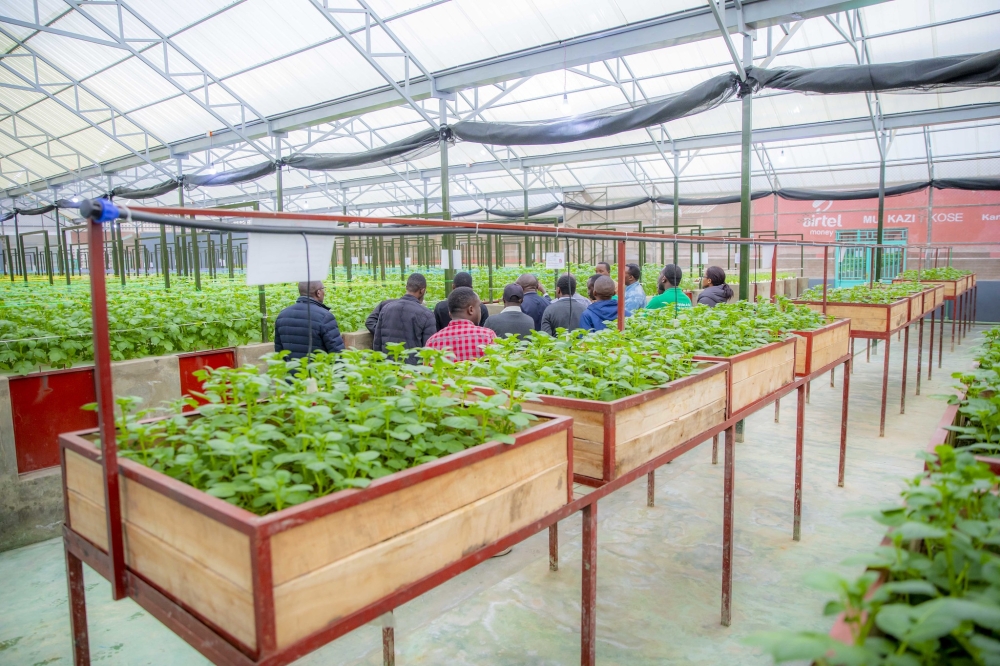

Agricultural output in Rwanda is projected to rise by 10% in the 2025 Season A, according to the Rwanda Agriculture and Animal Resources Development Board (RAB). Season A spans from September to February.
In 2023, Rwanda recorded 4,063,804 tonnes of agricultural produce during Season A, which increased to 4,379,725 tonnes in 2024.
ALSO READ: Govt to buy 26,000 tonnes of rice to cushion farmers from losses
Season A typically accounts for 70% of the total agricultural produce that feeds the country. RAB has announced that the hectares of land dedicated to crop cultivation will also increase by 10%, as part of broader strategies to boost agricultural production.
Various crops will be planted on more than 800,000 hectares in the upcoming season.
Telesphore Ndabamenye, Director General of RAB, told The New Times that an estimated 47,000 tonnes of subsidized mineral fertilizers and 4,200 tonnes of improved seeds for maize, wheat, and soybeans will be distributed in Season A.
"Agricultural production could increase by 10% compared to the 2024 Season A, but this will also depend on weather patterns," Ndabamenye noted.
He added that the land dedicated to crop cultivation will be expanded by utilizing idle arable land and repurposing 70% of pastureland for crops that can also serve as fodder for livestock.
"We are currently mapping pastureland in the districts of Nyagatare, Gatsibo, Kayonza, and Kirehe. The potential land for 70% of pasture for crop cultivation is estimated to be about 70,000 hectares," he said.
While 70% of this land will be dedicated to crops that provide fodder for livestock, 30% will be reserved for cow sheds as part of efforts to enforce a zero-grazing system and increase milk production.
ALSO READ: Agric Minister outlines priorities as he looks to rebrand sector
Crops to be cultivated using quality seeds and fertilizers on the repurposed pastureland include maize, beans, and soybeans, under a crop rotation scheme.
Additional forage for cattle will also be planted on the same land.
Farmers are required to have fodder storage facilities to ensure cows are fed during dry spells. Each hectare of land should accommodate at least five cows, which must be improved for dairy breeds or their crossbreeds.
Cow sheds must have access to water, either through rainwater harvesting or boreholes, and composting to produce manure is strongly encouraged.
Jean Claude Musabyimana, Minister of Local Government, emphasised that all idle arable land should be cultivated, adding that landowners unable to farm their land must lease it to those interested in cultivation.
"Local authorities can assist those with such land to find individuals who can temporarily cultivate it," he said.
According to the National Institute of Statistics (NISR), Rwanda’s total land area is estimated at 2.376 million hectares, with 1.372 million hectares (58% of the total land area) being used for agriculture.
Rehabilitating arable swamplands
The Ministry of Agriculture and Animal Resources (MINAGRI) has identified the rehabilitation of idle arable swamplands as a key measure to increase cultivated land and crop production next year.
Ernest Uzabibara, the head of the Commercialisation and De-Risking for Agricultural Transformation Project (CDAT), said more than 5,000 hectares of arable swamplands will be rehabilitated in Nyagatare District alone.
This includes the Rwangingo-Karangazi swampland that straddles Gatsibo and Nyagatare Districts, as well as the Muvumba wetland, Cyabayaga, Matimba, Kagitumba, and Warufu swamplands.
The Karambi swampland in Kayonza and the Nasho swampland in Kirehe will also undergo rehabilitation.
MINAGRI stated that 30 arable marshlands will be developed over the next three years, enabling farmers to grow crops during both rainy and dry seasons.
Ildephonse Musafiri, Minister of Agriculture, mentioned that Rwanda is considering establishing a state-owned company to buy and store surplus produce from farmers that is not purchased by traders, as a way to protect farmers from financial losses.


